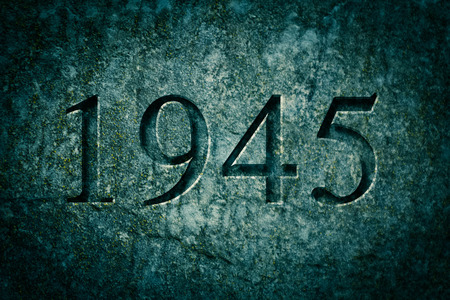Introduction to Nightmares in the UK
Nightmares are a universal phenomenon, but their interpretation and impact can vary significantly depending on cultural context. In the United Kingdom, nightmares have long been woven into the fabric of folklore, literature, and collective consciousness. Psychologically, nightmares serve as a window into our subconscious fears and anxieties, often reflecting societal pressures or personal struggles. Within British society, these disturbing dreams are not only seen as private experiences but also as cultural artefacts that reveal underlying concerns unique to the nation’s historical and social landscape. From tales of haunted castles to references in classic literature, nightmares have shaped how Britons understand fear, uncertainty, and resilience. This article explores the most common nightmares experienced across the UK and delves into their deeper cultural significance, shedding light on why these nocturnal visions continue to resonate so strongly within British life.
Typical Nightmares Experienced in the UK
Understanding the types of nightmares commonly experienced in the UK offers insight into both individual anxieties and wider cultural concerns. According to research conducted by the Sleep Council and various academic surveys, British people report a distinct set of recurring nightmares. These nightmares often reflect local experiences, societal pressures, and historical influences unique to the UK.
Most Commonly Reported Nightmares
The following table provides a breakdown of the most frequently reported nightmares among UK adults, based on data gathered from recent studies and nationwide sleep surveys:
| Nightmare Theme | Description | Percentage of Respondents* |
|---|---|---|
| Being Chased or Attacked | Dreams involving pursuit or assault, often by unknown figures or animals. | 38% |
| Losing Teeth | Anxieties about appearance, health, or personal loss manifesting as teeth falling out. | 29% |
| Falling | Sensations of dropping from heights, reflecting loss of control or instability. | 25% |
| Public Embarrassment | Dreams centred around failing exams, forgetting lines, or being humiliated in public settings like schools or offices. | 20% |
| Drowning or Being Trapped Underwater | A sense of suffocation or helplessness, sometimes linked to the UKs coastal geography. | 17% |
| Break-ins or Burglaries | Fear of invasion of privacy or personal security breaches. | 13% |
| Losing Loved Ones | Anxieties about bereavement, reflecting strong family values within British culture. | 12% |
| *Percentages based on aggregated results from multiple UK-wide surveys (2019-2023). | ||
Cultural Context Behind Nightmare Themes
The prevalence of these nightmares highlights both universal fears and issues particularly resonant in Britain. For example, dreams about losing teeth are more frequently reported in the UK than some other European countries, possibly tied to persistent stereotypes about British dental care. Nightmares involving public embarrassment often relate to social expectations around etiquette and reputation, which remain significant in British society. Meanwhile, break-in nightmares reflect ongoing concerns over home security and privacy in urban environments such as London and Manchester.
The Influence of Media and Historical Events
It is also important to note that media coverage—such as news stories about crime or high-profile accidents—can heighten anxiety-driven dreams. In addition, collective memories of national events (e.g., major floods or terrorist incidents) may shape recurring themes like drowning or being chased. Ultimately, these patterns offer a window into how modern Britons internalise both everyday stresses and wider cultural narratives through their subconscious experiences at night.

3. Nightmares Rooted in British Folklore and History
The tapestry of nightmares experienced across the UK is deeply interwoven with elements of British folklore, significant historical events, and legendary figures that have shaped the nation’s collective psyche. The rich mythological landscape—ranging from tales of spectral black dogs roaming the moors to ghostly apparitions lingering in ancient castles—provides a unique backdrop for the content of nightmares commonly reported by people living in Britain.
Folkloric Creatures and Superstitions
Traditional legends such as the “Bogeyman,” “Old Hag,” and “Banshee” have long been sources of nocturnal dread. These entities, often used in cautionary tales or to explain inexplicable phenomena, manifest in dreams as shadowy figures or menacing presences. The Black Shuck—a monstrous dog said to haunt East Anglia—frequently appears in nightmares as a symbol of impending doom, while tales of faeries abducting children inspire dreams about being lost or taken away from loved ones.
Impact of Historical Events
Britain’s turbulent history also casts its shadow over the subconscious. Nightmares involving war, invasion, or plague reflect memories embedded within national identity: visions of air raids during the Blitz, anxieties about invasion during times of political uncertainty, or overwhelming feelings linked to stories of famine and disease outbreaks. Such dreams are not merely personal anxieties but echoes of collective trauma, passed down through generations.
Legendary Figures Influencing Dreams
Iconic historical and literary figures—from King Arthur and Robin Hood to Jack the Ripper—often populate nightmares in distinctly British settings. These characters evoke themes of betrayal, heroism, and fear, their stories providing familiar yet unsettling narrative frameworks within which dreamers process contemporary concerns. For example, seeing a mysterious cloaked figure might draw upon centuries-old tales of highwaymen or infamous criminals stalking London’s foggy streets.
In summary, British folklore and history do more than provide colourful stories; they actively shape the fears and images encountered during sleep. By understanding these cultural underpinnings, we gain insight into why certain nightmares persist across generations and how they reflect deeper societal anxieties unique to the UK experience.
4. Societal Stressors and Contemporary Nightmares
The landscape of nightmares in the UK is profoundly influenced by contemporary societal stressors. Unlike traditional fears rooted in folklore or childhood anxieties, today’s British nightmares often reflect collective concerns that have emerged or intensified in recent years. This connection between societal pressures and the subconscious mind can be systematically examined by dissecting key issues shaping modern British life.
Brexit: Uncertainty and Disconnection
The protracted process of Brexit has generated widespread uncertainty across the nation. Dreams featuring themes of being lost, trapped, or unable to communicate are now more frequently reported, mirroring the anxieties many feel about identity, belonging, and the UKs place in Europe. The sense of division and unpredictability associated with Brexit infiltrates the dream world, manifesting as scenarios where individuals find themselves excluded from groups or navigating confusing, shifting landscapes.
The Housing Crisis: Insecurity and Instability
Housing insecurity is a pressing issue for many Britons, particularly among younger generations and those living in urban centres like London and Manchester. Nightmares involving eviction, homelessness, or unstable living conditions often arise from fears surrounding unaffordable rents, precarious tenancies, and the struggle to secure long-term housing. These dreams serve as a subconscious processing tool for dealing with the chronic stress of not having a stable home base.
Public Health Concerns: Vulnerability and Loss of Control
The COVID-19 pandemic has had a profound psychological impact on British society. Nightmares relating to illness, contamination, or losing loved ones have spiked since 2020. Even beyond infectious diseases, ongoing NHS pressures and mental health awareness have contributed to an increase in dreams about medical emergencies or being unable to access help when needed. Such nightmares encapsulate a broader fear of vulnerability and loss of control over ones wellbeing.
Summary Table: Societal Stressors and Their Nightmare Themes
| Societal Stressor | Common Nightmare Themes |
|---|---|
| Brexit | Isolation, confusion, exclusion from groups |
| Housing Crisis | Eviction, homelessness, unstable environments |
| Public Health Concerns | Illness, helplessness, inability to access care |
Cultural Reflection in Nightmares
The prevalence of these nightmare themes demonstrates how deeply societal issues permeate individual psyches across the UK. Nightmares function not only as personal emotional outlets but also as mirrors reflecting wider cultural anxieties. As these pressures evolve, so too does the content of Britain’s collective dreamscape—providing insight into the fears that shape national consciousness.
5. Regional Variations Across the UK
While certain nightmares, such as being chased or falling, are common across the United Kingdom, there are notable regional differences in nightmare themes that reflect the distinct cultural identities of England, Scotland, Wales, and Northern Ireland. These variations can be traced back to historical events, folklore, and collective memory unique to each nation.
England: Anxiety and Urban Themes
In England, especially in densely populated urban areas like London, nightmares often revolve around themes of social anxiety, public embarrassment, or being lost in a crowd. The rapid pace of life and emphasis on personal achievement frequently seep into dreams, producing scenarios related to work stress or failing important exams—reflecting societal pressures prevalent in English culture.
Scotland: Folklore and Ancestral Echoes
Scottish nightmares are sometimes coloured by the country’s rich tapestry of myths and legends. Nightmares involving mysterious creatures such as kelpies or shadowy figures from Highland folklore are not uncommon. The rugged landscape and turbulent history seem to foster dreams tinged with isolation or ancestral conflict, mirroring Scotland’s enduring connection to its land and past struggles.
Wales: Nature and Celtic Mysticism
In Wales, where nature and Celtic heritage play a significant role in cultural identity, nightmares may feature vast forests, mountains shrouded in mist, or encounters with mythical beings like the Tylwyth Teg (Welsh fairies). Themes of being lost in nature or pursued by supernatural forces echo traditional Welsh tales and a deep-rooted sense of connection to the countryside.
Northern Ireland: Historical Tensions and Restless Spirits
Northern Irish nightmares can be influenced by the region’s complex political history and folklore surrounding ghosts or “restless spirits.” Dream motifs might include feelings of being trapped, witnessing conflict, or navigating divided communities—subtle psychological echoes of The Troubles and ongoing efforts at reconciliation.
The Cultural Fabric of Nightmares
These regional differences highlight how collective experiences and cultural narratives shape the content of our dreams. Understanding these variations not only enriches our appreciation for the UK’s diverse heritage but also provides insight into how local identity influences the subconscious mind.
6. Interpretation and Coping Mechanisms in British Culture
In the UK, nightmares have historically been interpreted through a blend of superstition, psychology, and cultural attitudes toward sleep and dreams. Traditionally, nightmares were sometimes seen as omens or warnings—remnants of old folk beliefs that still linger in parts of rural Britain. These interpretations could be linked to anxieties about health, bad luck, or supernatural influences such as the “Old Hag” folklore in regions like Cornwall and Northern England.
However, with the rise of modern psychology and scientific understanding, most British people today are more likely to view nightmares as reflections of stress, unresolved emotions, or daily pressures. The British tendency towards understatement and emotional restraint often means nightmares are discussed lightly or even humorously among friends—sometimes referred to as having “a bit of a funny dream” rather than something deeply troubling.
Culturally rooted coping mechanisms in the UK include both practical and social approaches. Many Brits favour a “cup of tea” as a first response to distress—including after a nightmare—as tea is widely regarded as soothing and comforting. Storytelling also plays a role; recounting bad dreams over breakfast or to a close confidant can help diminish their power.
On a community level, there is an increasing openness around mental health, with many people turning to therapy or self-help resources when nightmares become persistent. Sleep hygiene practices—such as maintaining regular bedtime routines, limiting screen time before bed, and ensuring a comfortable sleep environment—are commonly recommended by British healthcare providers.
Historically, some families placed lavender under pillows or hung dreamcatchers (adopted from other cultures) in children’s bedrooms to ward off bad dreams. While these practices are less common now, they reflect a longstanding desire within British culture to address nightmares gently and pragmatically.
Ultimately, British interpretations and coping strategies for nightmares balance tradition with modernity: blending humour, social connection, practical comfort measures, and growing acceptance of psychological support.
7. Conclusion and Cultural Reflection
Analysing the common nightmares experienced across the UK, we find that these nocturnal visions are far more than mere figments of imagination; they serve as a unique mirror reflecting contemporary British identity and collective anxieties. Nightmares about failing exams, being late for trains, or encountering supernatural entities are not isolated phenomena but are deeply rooted in British social norms, historical narratives, and present-day challenges. Such dreams echo societal preoccupations with success, punctuality, and an enduring fascination with folklore—elements that have shaped British culture for generations.
The persistence of themes like loss of control, vulnerability, and social embarrassment within nightmares highlights the subtle yet pervasive pressures embedded in British society. These anxieties often stem from a rapidly changing world: evolving political landscapes, economic uncertainty, and shifts in traditional values all find their expression in the subconscious mind. Nightmares thus become a safe space to process unspoken fears and rehearse responses to perceived threats.
Moreover, the way nightmares are discussed—whether through humour, stoicism, or shared storytelling—reveals much about the British approach to adversity. The cultural tendency to understate distress or to turn discomfort into communal jokes speaks volumes about national character traits such as resilience and self-deprecation. In this light, nightmares are not only personal experiences but also part of a broader cultural dialogue about what it means to be British today.
In synthesising these findings, it becomes clear that nightmares hold diagnostic value for understanding collective identity. They provide insight into underlying currents of worry and hope, reminding us that even our darkest dreams are shaped by the world we inhabit. As Britain continues to evolve, so too will its nightmares—offering ongoing clues to the changing fabric of national consciousness.


